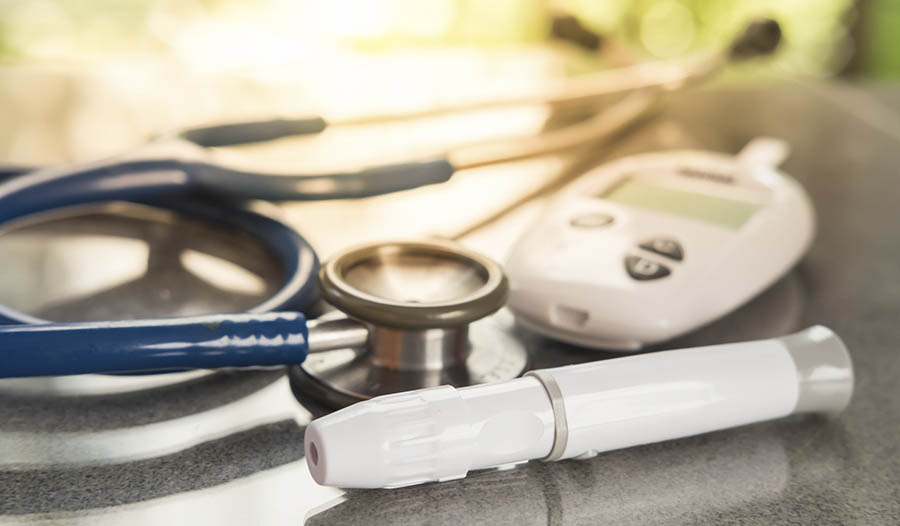15 módja annak, hogy egészséges maradjon cukorbetegségben utazva

A cukorbetegséggel való élet sok életmódváltást igényel. Az egészséges glükózszint fenntartása érdekében fontos, hogy az ilyen állapotban szenvedők rendszeresen gyakoroljanak, és kiegyensúlyozott étrendet fogyasztsanak zöldségekben és gyümölcsökben gazdag egyéb életmódbeli változások mellett. Az utazás, akár munka, akár szórakozás céljából, sok cukorbetegek életének rendszeres része, és kihívást jelenthet — a megfelelő táplálkozás biztosításától az úton vagy repülőtéren a kellékek és gyógyszerek rendben tartásáig az utazás igényesebb a cukorbetegek számára, és a hibás lépések súlyos (sőt életveszélyes) következményekkel járhatnak. A gondos tervezés és a részletekre való odafigyelés azonban segíthet egészséges és kényelmes maradni a következő utazás során.
Az alábbiakban tippeket találunk a cukorbetegségben szenvedő utazáshoz. Nagyon fontos, hogy kövesse ezeket az irányelveket, és ne hagyja egészségét a véletlenre!
13 dolog, amit figyelembe kell venni utazás előtt
Látogasson el orvosához, mielőtt elmegy
Ügyeljen időpontot orvosával, hogy utazás előtt megbizonyosodjon arról, hogy optimális egészségi állapotban van-e. Ellenőrizze, hogy aktuálisan van-e vérvizsgálatok és éves szemvizsgálatok. Ha az utolsó látogatása óta bármilyen változást tapasztalt egészségi állapotában, fontos, hogy értesítse orvosát. Vérvizsgálatokat rendelhet annak érdekében, hogy megbizonyosodjon arról, hogy a gyógyszer adagját nem kell módosítani az indulás előtt. Ne feledje, hogy az időzónaváltozások és az ünnepek megnehezíthetik orvosának elérését távol tartózkodása alatt, ezért feltétlenül tegyen fel bármilyen kérdést, és kezelje az esetleges aggályokat orvosa irodájában történő látogatása során. És ne feledje, hogy a teszt eredményei időbe telhetnek - feltétlenül egyeztesse meg időpontját néhány héttel a távozás előtt.
Győződjön meg róla, hogy az oltások aktuálisak
Attól függően, hogy melyik helyre indul, és az utazási évszaktól függően bizonyos oltások javasolhatók. Kérje meg orvosát, hogy vizsgálja át az oltási előzményeket, és győződjön meg arról, hogy aktuális-e Az 1-es és 2-es cukorbetegeknél nagyobb lehet bizonyos fertőzések és fertőzések szövődményeinek kockázata, és a Betegségellenőrzési Központ (CDC) erősen ajánl bizonyos vakcinákat, beleértve az influenzát és a hepatitis B-t, a cukorbetegek számára.
Csomagoljon egy diabéteszes eszközkészletet
Ha otthon használják, feltétlenül csomagolja be a glükométer gépet, a glükométer csíkokat és a lanceteket. Tanulmányok azt mutatják, hogy a 2-es típusú cukorbetegek többsége valóban nem ér el jobb ellenőrzést, ha rendszeresen ellenőrzik a glükózjukat. Utazás közben azonban az étrendje valószínűleg más lesz, mint a szervezet hozzászokta, és a glükóz jobban változhat, mint a normál étrendben. Bölcs dolog egy tartalék glükométert is venni, mivel lehet, hogy olyan helyen van, ahol nehéz helyettesítőket találni. Az extra elemek bevitelét is figyelembe kell venni. Készítsen egy ellenőrzőlistát, hogy megbizonyosodjon arról, hogy ne felejtse el a létfontosságú vagy nehezen cserélhető kellékeket.
Kérjen orvosát egy levelet
Kérje meg orvosát, hogy írjon Önnek levelet, vagy írjon fel egy vényköteles papírra, amely leírja a diagnózist. Ez különösen hasznos lehet, ha inzulint, tűket és fecskendőket használ hivatalos levélként, amely segít megkönnyíteni az utat a biztonsági megállásokon, és elkerülheti a szükségtelen vizsgálatot és stresszt. Az is hasznos lehet, ha orvoshoz kell fordulnia, amíg távol van.
Tartsa gyógyszereit a kézipoggyászban
Mindannyian ismerünk valakit, akinek a poggyászát elvesztették a légitársaságok. És mivel ez az utazási baleset annyira gyakori, nagyon fontos, hogy utazás közben mindig a személyén tartsa gyógyszereit. Ez különösen fontos, ha inzulint vagy más injekciót szed. Ezenkívül a poggyász bejelentkezésekor a rakománytér hőmérséklete elérheti a fagypont alatti hőmérsékletet, ami befolyásolhatja a gyógyszereket. Ne kockáztassa meg a gyógyszereit vagy bármi mást, amire szüksége van ahhoz, hogy egészséges, elveszett vagy rossz helyen maradjon, mivel napokig tarthat, amíg a légitársaság visszaadja azokat Önnek. A legtöbb légitársaság lehetővé teszi a cukorbetegek számára, hogy gyógyszereket hozzanak, még akkor is, ha meghaladják a 100 ml értéket.
Hozz Extra gyógyszereket
Ha hosszabb ideig tervez utazni, győződjön meg arról, hogy elegendő gyógyszer van ahhoz, hogy előre nem látható késések esetén legalább kétszeresére tartson az utazás időtartamának. Ha általában 30 napos gyógyszert kap a gyógyszertárból, kérjen orvosát 90 napos ellátásért. Jobb biztonságban, mint beteg!
A cukorbetegség kezelésére alkalmazott gyakori gyógyszerek közé tartozik többek között a metformin, a glipizid, a glimepirid, a pioglitazon, a szitagliptin, a liraglutid és az inzulin. Ha ezek bármelyikén részt vesz, döntő fontosságú, hogy győződjön meg arról, hogy elegendő van az utazáshoz. És vigye őket egynapos kirándulásokra és egyéb rövid kirándulásokra.
Hozz egy gyógyszerlistát
Tartson írásos listát a bevitt gyógyszerekről a pénztárcájában vagy egy utazótáskában, amelyet mindig magával fog tartani. Írja le a nevet, az adagot (egységek vagy mg) és a gyakoriságot (azaz naponta egyszer, naponta kétszer stb.). Ez hasznos lehet abban az esetben, ha elveszíti a gyógyszereit, vagy ha nem tartózkodik a szállodából, és orvosi szolgáltatást kell kérnie.
Csomagolja be az inzulinpumpákat és a folyamatos glükózmonitorokat (CGM)
Azok esetében, akik inzulinpumpát használnak, további óvintézkedéseket kell fontolni. Ha több időzónán keresztül utazik, és ha az étkezési ideje megváltozik, előfordulhat, hogy a szokásosnál gyakrabban kell ellenőriznie a vércukorszintjét, és figyelembe kell vennie az ilyen ingadozásokat. Ezenkívül az időzóna beállításait ennek megfelelően frissíteni kell.
Néhány inzulinpumpa gyártó, mint például a Medtronic, lehetővé teszi az ügyfelek számára, hogy „kölcsönözjenek” egy extra inzulinpumpát a további bizonyosság érdekében. Vegye fel a kapcsolatot az adott gyártójával, és nézze meg, van-e kölcsönadó programja. Egy extra szivattyú és kellékek nyugalmat biztosíthatnak.
A legtöbb inzulinpumpa és folyamatos glükózmonitor (CGM) biztonságosan áthaladható a repülőtéri fémdetektoron. Általában azonban azt javasoljuk, hogy NE lépjen be az egész test szkennerbe az eszközökkel. Kérdezze meg ajánlásait az adott gyártótól, és tájékoztassa a repülőtér biztonságát, hogy ezekkel az eszközökkel utazik.
Ismerje meg a sürgősségi szolgálati lehetőségeket a célállomáson
Nem számít, hová tart, győződjön meg arról, hogy tisztában van azzal, hogy milyen orvosi szolgáltatások állnak rendelkezésre abban a valószínűtlen esetben, ha szüksége lenne rájuk. Kérdezze meg a szálloda résztvevőit, vannak-e helyi sürgősségi klinikák vagy kórházak a közelben, ha szüksége van rá. Ha utazó hajón tartózkodik, foglalás előtt érdeklődjön az általuk a hajón nyújtott orvosi szolgáltatásokról. Ne várjon, amíg rosszul érzi magát, vagy orvosi vészhelyzetet tapasztal - tegye meg a szükséges kérdéseket, mielőtt rendeződik.
Tudja meg, hol vannak a helyi gyógyszertárak
Egyes gyógyszerek, amelyek csak az Ön országában rendelhetők fel, vény nélkül kaphatók az utazási helyen. Tudja meg, hol találhatók a helyi gyógyszertárak, és győződjön meg róla, hogy megvan a gyógyszerlistája, ha elveszíti vagy elveszíti a gyógyszereit.
Fontolja meg az utazási biztosítást
Mielőtt távoznál, hívja fel személyi egészségbiztosítását, és kérdezze meg tőlük, hogy biztosít-e fedezetet vagy visszatérítést az olyan egészségügyi szolgáltatásokért, amelyekre utazás közben szüksége lehet. Ha nem, fontolja meg az utazás előtt külön utazási biztosítás megvásárlását, hogy elkerülje a szolgáltatások váratlan költségeit. Az internetes keresés olyan vállalatokat nyújthat, akik segíthetnek ebben a lefedettségben.
Hozzon egészséges harapnivalókat
Utazás közben az étkezési ütemterv és az étkezési lehetőségek megváltoztatása kihívást jelenthet a jó vércukorszint szabályozásának fenntartását. Az egészséges harapnivalók csomagolása döntő fontosságú lehet. Valószínűleg utazás közben gyakrabban eszik kint, ezért nagyon fontos kérdéseket feltenni, különösen, ha nem ismeri bizonyos összetevőket. Az alacsony szénhidráttartalmú lehetőségek jó ötlet a cukorbetegek számára.
Hozzon hűtőt autóval utazva
Autóval utazva sokan a drive-thru gyorséttermekre támaszkodnak étkezésükhöz. Ezek az élelmiszerek gyakran tartalmaznak sok nátriumot, szénhidrátot és feldolgozott összetevőt, amelyek pusztíthatják a vércukorszintet - különösen akkor, ha órákig ülsz autóban. Az egyik megoldás az, hogy ha lehetséges, saját ételt hozz. A hordozható hűtő nagyszerű módja annak, hogy a gyümölcsök és zöldségek frissen tartsák. Ezenkívül előfordulhat, hogy az inzulint hűvösen kell tartania, de nem fagyasztva, és egy hűtő segíthet.
A cukor stabilizálása és annak biztosítása érdekében, hogy ne legyen túl magas, fontos, hogy az alacsony szénhidráttartalmú ételek könnyen elérhetők legyenek. Íme néhány jó választás:
- Fehérje rudak (feltétlenül olvassa el a címkét, mivel sok magas cukortartalommal rendelkezik)
- Diófélék és magvak: mandula, brazil dió, kesudió, pekándió, pisztácia és tökmag
- Tejsavó vagy növényi fehérjeporturmixok
Étkezés előkészítése légi utazáshoz
Ha repülőgéppel utazik és időt tölt a repülőtéren, nehéz lehet egészséges étkezést találni. Az étkezés előkészítését szeretné biztosítani — a repülőterek lehetővé teszik, hogy ételt hozhasson otthonról, szóval hozz magával egy csomagolt ebédet, és ügyeljen arra, hogy egészséges harapnivalót tartson a táskájában. Ne feledje, hogy a folyadékkorlátozások érvényben vannak, így a fehérje turmixok és a turmixok valószínűleg nem jutnak át a biztonságon.
Ne egyél meg mindent, amit mehetsz a tengerjáró hajókon
A legtöbb tengerjáró hajó büfével rendelkezik, ami nagyon csábító lehet. Fontos, hogy ennek megfelelően megtervezze étkezését, mivel a szénhidrátban gazdag ételekhez és desszertekhez való korlátlan hozzáférés kihasználása komolyan növelheti a vércukorszintet. Töltsön fel salátákat és termékeket, amikor büfét fogyaszt. Ha meleg az időjárás és alkoholt fogyasztanak, a kiszáradás gyorsan beállhat, és a vércukorszint veszélyes szintre emelkedhet. Különös óvatosság szükséges ahhoz, hogy az ember szórakoztató, de egészséges, biztonságos utazást végezzen.
Kiegészítők, amelyek segíthetnek a cukorbetegség kezelésében
Króm
A króm nélkülözhetetlen ásványi anyag, amely szerepet játszik a glükóz anyagcserében. A króm használata glükózszabályozáshoz azon a tényen alapul, hogy a króm elem szükséges a GTF vagy glükóztoleráns faktor néven ismert enzimhez. A GTF kötődik az inzulinhoz, és hatékonyabbá teszi az inzulint, ezáltal elősegíti a vércukorszint csökkentését. Az évek során viták merültek fel arról, hogy a króm hasznos-e vagy sem. Azonban egy 2018-as metaanalízis, amely 28 tanulmányt vizsgált, arra a következtetésre jutott, hogy a króm segíthet csökkenteni az éhgyomri vércukorszintet, miközben csökkenti a hemoglobin A1C-t is, amely a cukorbetegség általános szabályozásának markerje. Javasolt adag: 200-500 mg naponta kétszer
Berberin
Berberine egy aranysárga vegyi anyag. Az oregoni szőlő és az indiai borbolya szárából származik. Használata csaknem 3000 évre nyúlik vissza a hagyományos kínai orvoslásban (TCM). Használható a vércukorszint, a magas koleszterinszint és a magas vérnyomás javítására. Egy 2015-ös metaanalízis tanulmány, amely 22 másik vizsgálatot és összesen 2569 beteget vizsgált, arra a következtetésre jutott, hogy a berberin javíthatja az éhgyomri glükózszintet, étkezés utáni vércukorszintet és a teljes három hónapos átlagot, amint azt a hemoglobin A1c vérvizsgálattal mértük. Egy 2017-es tanulmány azt javasolta, hogy a berberin glükózcsökkentő képességeinek egy részét kifejtheti azáltal, hogy kedvezően befolyásolja az egészséges bélbaktériumokat. Javasolt adag: 500 mg szájon át naponta háromszor.
Egyéb gyógynövény-kiegészítők, amelyeket a cukorbetegek gyakran szednek, a fahéj, a fekete köménymag kivonat és a olívalevél kivonat.
Összegzés:
A felkészülés a siker kulcsa, függetlenül attól, hogy merre utazik. Ha elegendő időt szánsz az utazási útvonal, a szállások és az orvosi források megtervezésére, segíthetnek abban, hogy továbbra is utazhassa a világot, függetlenül attól, hogy milyen egészségügyi állapotban vannak. Jó utat!
Referenciák:
- Hozzáférés 2018. október 26-án https://www.medtronicdiabetes.com/customer-support/traveling-with-an-insulin-pump-or-device
- Med Hypotézisek. 1980 november; 6 (11): 1177-89.
- Mol Nutr Food Res. 2018 január; 62 (1). doi: 10.1002/mnfr.201700438. Epub 2017 augusztus 15.
- J Ethnopharmacol. 2015 február 23; 161:69-81. doi: 1016/j.jep.2014.09.049. Epub 2014 december 10.
- Zhongguo Zhong Yao Za Zhi. 2017 június; 42 (12): 2254-2260. doi: 19540/j.cnki.cjcmm.20170307.014.
- Complement Ther Clin Pract. 2018 május; 31:1-6. doi: 10.1016/j.ctcp.2018.01.002. Epub 2018 január 4.
FELELŐSSÉGKIZÁRÓ NYILATKOZAT:A jelen blognak nem célja diagnózis felállítása...














































































 Tartalomjegyzék
Tartalomjegyzék


